Description
Pushing the Limit on Recycling Old Tires in Asphalt Mixtures
Peter E. Sebaaly, Stephanos Khalil, Elie Hajj, Adam Hand
ABSTRACT. Asphalt concrete (AC) mixtures are used to construct the surface layer of the flexible pavements. The surface layer can either be new/reconstructed or as overlay over old flexible pavements. When AC mixtures are used as new/reconstructed surface layer, they must resist rutting and fatigue cracking under traffic loads. When AC mixtures are used as AC overlay, they must resist reflective cracking. Rutting is caused by the accumulated of permanent deformations developed throughout the AC layer. Fatigue cracks initiate at the bottom of the AC layer due to repetitive bending under traffic loads. Reflective cracking is where cracks in the existing AC pavement tend to reflect through the AC overlay quickly. The ability of an AC mix to resist rutting, fatigue, and reflective cracking is related to its stability and flexibility under traffic loads. The objective of this study was to evaluate the impact of tire rubber modified binders on the rutting, fatigue, and reflective cracking resistance of AC mixtures. This research evaluated the resistance of unmodified, tire rubber modified, and tire rubber with polymer modified AC mixtures to rutting, fatigue and reflective cracking. The AC mixtures were designed following the Superpave volumetric mix design method and dynamic modulus master curves were developed for each mixture. Mechanistic analysis of a typical AC pavement was conducted to assess the impact of the AC mixtures on pavement performance life. The mechanistic analysis indicated that tire rubber and tire rubber with polymer modifications offer improved resistance to rutting and fatigue cracking. In the case of reflective cracking, the tire rubber modified mixture showed superior resistance to reflective cracking compared to the unmodified mixture, while reducing construction cost and consuming significant amount of old tires.
KEYWORDS: Tire Rubber, Asphalt Concrete, Rutting, Fatigue Cracking, Reflective Cracking, Mechanistic Analysis, Pavement Performance

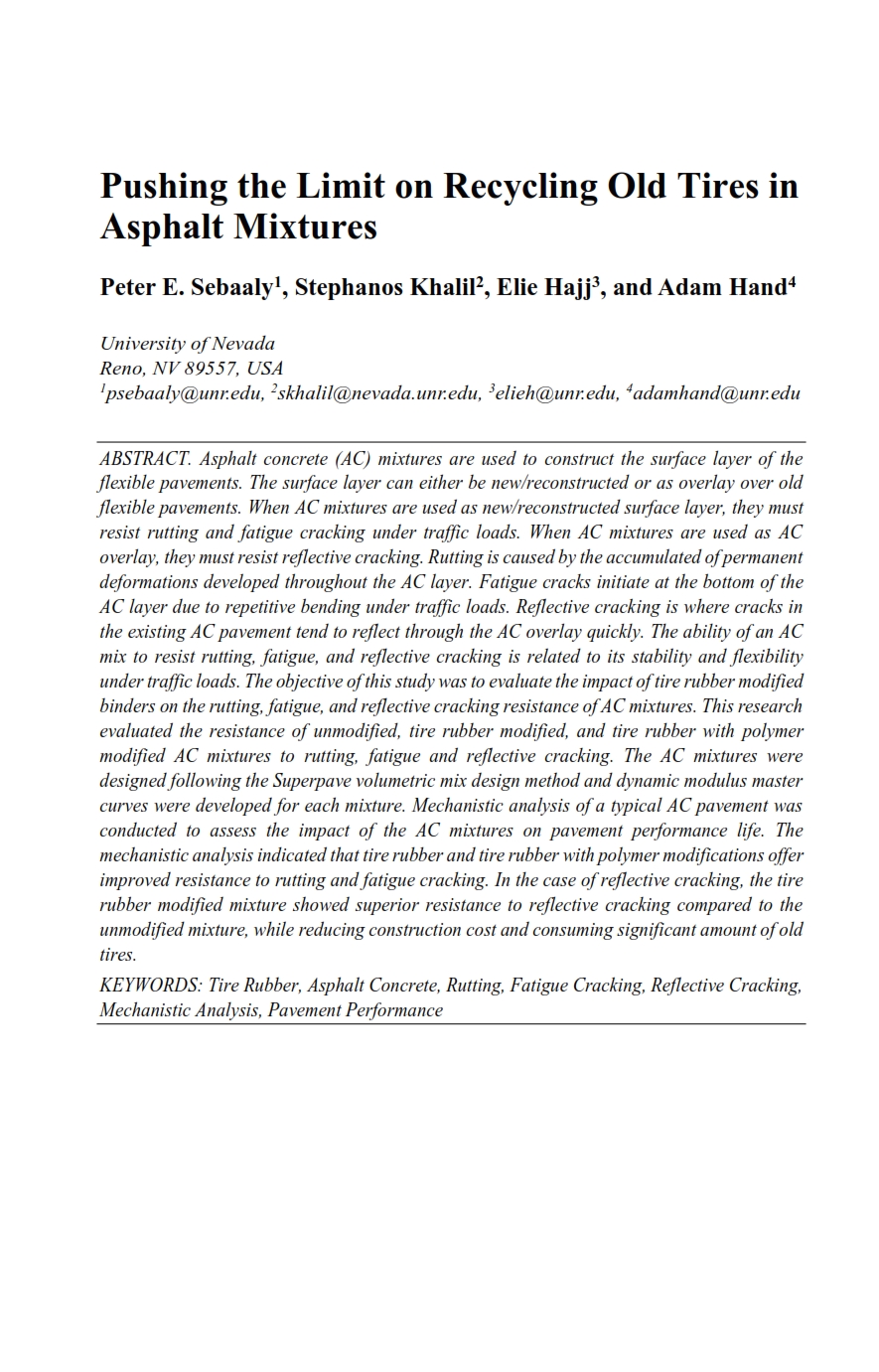
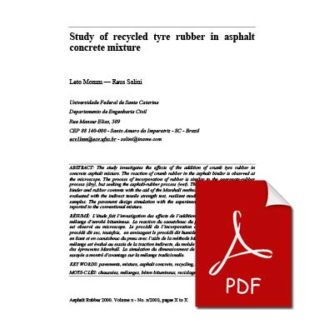
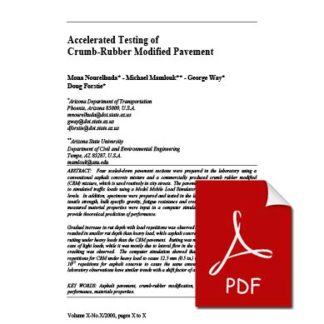
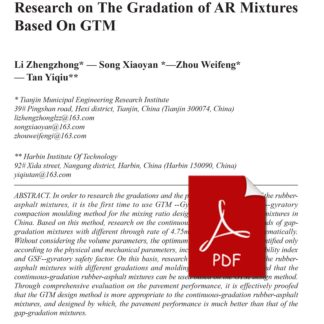


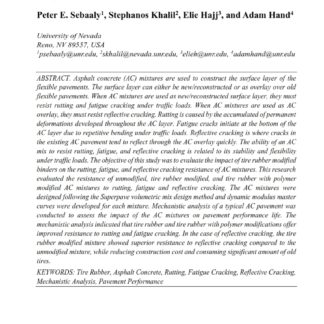
Reviews
There are no reviews yet.